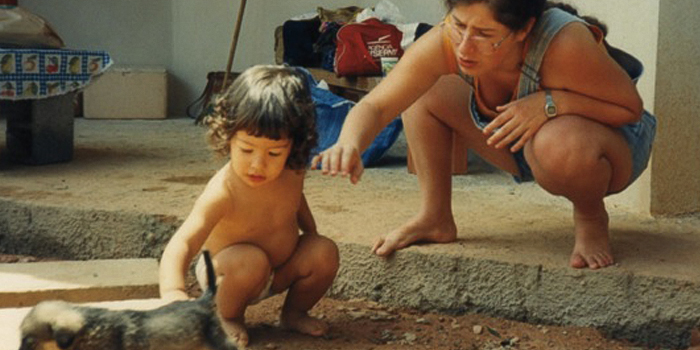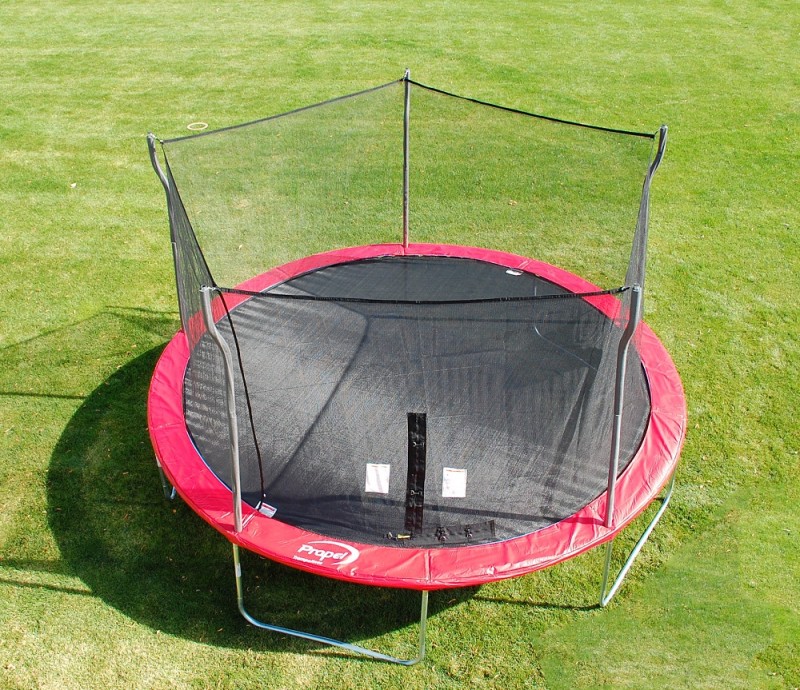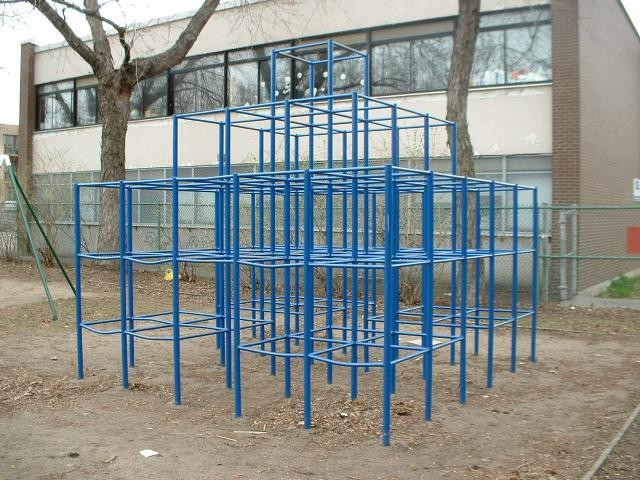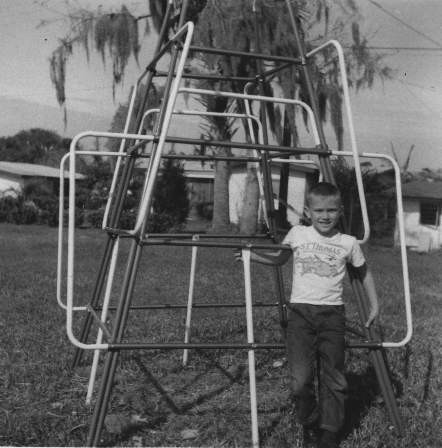
Header image: My daughter and me, circa 1990-91, personal archive.
I saw the picture above today as I was looking for something else. Oh, hey, look: it’s my daughter at about two, a puppy and me. The humans were squatting. See her narrow, neutral stance deep squat? Thirty years later she still has that. I would like to think that this is the result of a stimulating cognitive-motor environment where she was provided freedom and challenges to keep her innate abilities and build on them. Unfortunately, that’s not true. My knowledge about human neuro-cognitive development was limited to Piaget (translated, 1977) and my teenage athletic life was far behind. I wasn’t a lifter yet. Academia had little to offer in terms of new ideas (and there was no Google) and my social universe was motor-deficient: I was 26 when I defended my thesis, one month before my daughter was born, and about 28 in the picture, working on my Ph.D. research.
Did you ever ask yourself: “If I had to do this again, would I do it differently?”. About anything in your life that you did as a younger person? If I was that young woman in the picture with my present old mind, I would do it all differently.
RECENT: One Diet Size Fits One
The beginning was not too bad considering that it was my first and only baby. I had no experience with human infants. With all my zero knowledge about children, a strong determination to do the right thing and also to force others to do conform to my decisions, I said: “She is going to stay in my room at the maternity ward because we’re mammals and that’s where she is supposed to be”. The obstetrician tried to argue but I was adamant: “This is not your area of expertise. This is my baby and these are my rules. This is when you either agree to my terms and we go on or I’ll find another doctor”. He agreed and opened a dangerous door. Among other things, I told him to shut up during the delivery because babies are not supposed to be exposed to loud noise, and, to me, everything was a loud noise. I ordered the nurse to turn down the lights. Against his advice, I fed the baby every time the baby “asked for food” (?). I was doing good at my baby’s larval stage!
We got home and the umbilical cord looked ugly. I freaked out and called everybody. My mother un-freaked me. So far, so good.
When the baby started moving more, at about two months, I put her over a blanket on the carpet-covered floor. No restraints, 360-degree freedom, that should be good. I was doing good.
Then, one day, when she was about five months old, I heard a “thump” sound from her bedroom and what seemed to be a slow attempt to cry. I rushed and found her sitting on the floor beside her crib, looking confused. I was terrified: She had gotten up, pulled herself from the crib and fell head-first on the floor. I was not doing good anymore: I was doing awful! I freaked out and called everybody. My mother asked me some questions about how the baby was and told me not to worry: "The same thing happened to you". I was not sure this was reassuring information. Falling head-first from the crib was not on the users’ manuals and it made me nervous.
By that time, she was moving all over the apartment using her elbows. That, too, was not on the users’ manuals. Nothing in the libraries either. The little thing was fast and crawled like a lizard. Soon after that she was crawling hands-and-knees style, and climbing more (the crib guard rail was lowered so that she could get out without falling). Then walking, and using the couch as a trampoline, sometimes falling on her head.
Not too long after that, I realized that everything I had imagined about how I would raise the baby was wrong. I felt insecure as reality punched me on the face again and again. At six months, according to the users’ manuals, the baby should be eating an omnivorous purée. Nope. She did some artwork with the purée but wasn’t interested in eating it. She was a human milk type of person. She was fast, strong, climbed over lands and seas to reach the food fountain (breasts) and fed – no assistance required.
By then, she had eaten a bug, cat shit, a cigarette butt, and countless other half a cubic inch size items because she was damned fast. One day I had an insight: What if I presented food in individual small portions, like bugs? First attempt: A bowl with small noodles, green peas and small pieces of chicken. She ate everything and pooped everything: no digestion, no absorption. Failure number 53. All of a sudden, she grew four teeth and that was it: She bit my nipple and decided she was done with human milk. She went for food with a vengeance.
That firm decision of not giving her super-sugary food? Just “healthy foods”? It was destroyed at the first kid party I took her to, as I watched her devouring half of the “brigadeiros” (a type of Brazilian chocolate truffle) tray.

By User Mayra (Maych) on Flickr - Flickr, CC BY-SA 2.0
If I could live those years all over again, I would do it differently. Unfortunately, I can’t rewind that tape but if you are reading this and you know a young couple expecting a baby or handling their first one, maybe they would like to read what I concluded.
No Crib – Spine and Core
First, there is no reason for the baby to sleep in a crib if the floor is minimally clean. A simple mattress with slightly elevated sides is what the baby needs. It will not fall out of the mattress during its sleep because the foam guards will keep it from rolling over and it will be able to easily move out when it wakes up. The mattress doesn’t need to be thick given the light weight of the baby.
The baby’s paravertebral muscles and core are very strong. Their heads are proportionately almost twice as heavy as an adult’s and they hold it up while laying belly-down at two months or less. They need the freedom to use all these powers and not being wrapped like a Thanksgiving turkey.
The EVA Floor and the Cushioning Around “Things”
That brings us to what the baby rolls out of its mattress into. I would have the whole house, except for the kitchen and the bathroom, covered with EVA. My house today, with two adults, adopts a “no shoes in the house” system. It’s very easy and requires a small separated area for people to take off their shoes and put on the “indoor” footwear. Cleaning an EVA floor is no big deal.
Around the edges of climbing walls and shelves, I would place futon cushioning.
Mountain Climbing Walls Anywhere Possible in the House – Cushioning at the Base
Before even becoming proficient in executing tasks at a deep squatted position, of pulling “dead” (zero velocity) objects from the ground through the coordinated engagement of their posterior chain, babies are capable of pulling their body weight (and tablecloths, eyeglasses, among other things). This amazing ability tends to fade out as they grow and don't need to use the pulling capacity as much as before. If they are offered climbing environments, though, they will keep climbing and remain strong pullers.
Footage of feats of extreme bodyweight strength, coordination and adorability:
The Foundations of Movement: Strength, Speed, Rhythm
Most parents are surprised by how strong, fast and attracted to rhythm their babies are. Unfortunately, those unprepared for this may expose their babies to harm and serious domestic accidents may happen. Standing shelves not properly screwed to the wall may fall on them as they climb it, they may rush out of chairs and cribs and, god forbid, they may climb and fall out of apartment windows.
Rhythm: Children are Natural Dancers
Children have an innate sense of animate time in movement. According to Trevarthen and collaborators, it is this innate rhythmicity that makes it possible for children to engage in timed expressive gestures of others and to interact musically, dance, and even produce narrative and learn (Trevarthen et al 2011). Delafield-Butt and Trevarthen pushed the argument even farther, suggesting that evidence points to timed movement as the origin of human intelligent expression, materialized in self and other-narratives and story-telling. Apparently, humans start engaging in timed expression even before birth (Trevarthen 2017). Believe it or not, that makes a lot of sense to me: my 30-year-old remembers songs that I sang to her while I was pregnant (or so it seems). The evolutionary implications of these findings haven’t been explored but are certainly challenging. Music and dance are much more a part of traditional societies than ours.
However this innate ability came to be, it is there, in every kid. If I had to do it all over again, this is one of the biggest changes I’d make: I’d make it possible for my baby to engage in music and dance from day minus something (before birth) and then on, forever.
Little girls dancing flamenco with her mother’s shoes:
Older little girl who is a true genius dancer:
Strength: Children are Naturally Strong. What Their Strength’s Strength Will Turn Out To Be is in Great Part Genetically Determined
As I hope you watched in the previous videos, babies are exceptionally strong and coordinated. If not seriously constrained by hours of sitting in chairs, children retain a high level of strength and coordination. The playground games they come up with, anywhere and since time immemorial, involve jumping, squatting, pulling and pushing.
Children are Natural Fighters
That’s a controversial topic which I elaborated on in the article “Brainstorm: Changing Perspectives on Human Strength — Human Grip”. According to recent evidence, several important aspects of human bipedalism are related to our ancestors’ fighting and hunting predisposition. All sports ultimately derive from fighting. Children are particularly interested in martial arts.
Little girls in Martial Arts:
A Calisthenic Playground in the Backyard
Remember these? Jungle gyms were part of generation X and older adults’ childhoods.
Their origin is probably ancient. We just never thought why they are so attractive to children: until a certain age, kids retain their bodyweight pulling ability and just can’t resist a monkey bar or jungle gym.
By Father of JGKlein, used with permission - Father of JGKlein, used with permission, Public Domain
Most parks had jungle gyms and monkey bars in the cities where my daughter grew up. She was a jungle-gym and bike kind of girl.
Trampolines
By the time children are performing activities on a squatted position, they are capable of squat jumping and countermovement squat jumping whether you want it or not. Trampolines are not only safer but much more fun than the couch.

Inuit blanket toss in Wainwright, Alaska (1922-1923) during Amundsen's Maud Expedition By National Library of Norway - https://www.flickr.com/photos/national_library_of_norway/12114498483/, No restrictions, https://commons.wikimedia.org/w/index.php?curid=41839788
Everybody loves a trampoline and yes, it’s related to the human ability to squat.

By Nayand - Own work, CC BY-SA 3.0
Shelves: Rubber-Coated, Screwed to the Wall and Closed With Acrylic Sliding Doors
My shelves were screwed on the wall, all of them. Still, they had sharp corners and the tiny human repurposed shelves as she repurposed everything else. The number of domestic accidents with children caused by furniture is high.
There’s a philosophical issue here: There is only one period in our lives when we enjoy absolute freedom from strict, conventional categorical thought. That’s early childhood. Everything is whatever we can think or make of it. If I had to do it all over again, I would be an ally in the repurposing-friendly-domestic objects.
Eventually, children will be domesticated into culture like all of us. It just doesn’t need to be so soon or so restrictive.
Bottom Line
At the early stages, and maybe not so early, children’s motor development is inseparable from cognitive and emotional development (Adolph & Berger 2007). Children’s motor-cognitive-emotional-neural development doesn’t take place in the perfect vacuum and STP (standard temperature and pressure) of ideal physics experiments. As I have been insisting on this column, inter-individual variability and populational diversity are the rule rather than the exception (Adolph et al 2014). In this case, culture plays a major role (Adolph & Hoch 2019). Cultures that negatively interfere with the child’s innate three-dimensional exploration of the environment, equipped with their evolving cognitive-emotional-motor skills, blunt the person. They blunt whole populations by adopting restrictions on children's activities. One of the first motor restrictions is on the full flexion and extension of the lower limbs, also known as the deep squat: children are told to sit on chairs.
Positive or negative environmental factors on children’s development begin in the home environment (Miquelote et al 2012). It continues, for the good and the bad, at school. I dream of schools with no chairs, bean bags to sit on and adjustable surfaces (substituting tables). I dream of a school that takes the constructivist perspective (Scheer et al 2012) far enough to integrate the child’s body in the inter and cross-disciplinary learning process.
Master Yoda said: “You must unlearn what you have learned”. That is definitely true for us, Western adults, concerning children's development. Ironically, maybe the first step would be protecting children from unlearning what they were born knowing and what they learn unassisted during their first years. That would be a small step for a tiny human and a great step for humanity.
Nobody needs to teach a baby how to squat. Or, for that matter, how to RDL things, how to squat jump, how to countermovement squat jump, how to push or how to pull, including pulling their own bodies out of restricted environments. All these amazing innate abilities that they use to explore a blank-slate-universe which they will fill according to their genius-level creativity if not restricted by culture are a thing of beauty (Kim 2018). More than that, and this is just a hypothesis because it never happened, unleashing their repurposing skills, their pulling, squatting, jumping and pushing innate abilities may combine with their developing cognitive abilities into something truly revolutionary.
I say we all celebrate the infinite beauty of movement rhythm, strength, agility, coordination, speed, power and its intrinsic relation to our thoughts and emotions. I say we be like this dad:
References
- Adolph, Karen E., and Justine E. Hoch. "Motor development: Embodied, embedded, enculturated, and enabling." Annual review of psychology 70 (2019): 141-164.
- Adolph, Karen E., and Sarah E. Berger. "Motor development." Handbook of child psychology 2 (2007).
- Adolph, Karen E., Whitney G. Cole, and Beatrix Vereijken. "Intraindividual variability in the development of motor skills in childhood." In Handbook of intraindividual variability across the life span, pp. 79-103. Routledge, 2014.
- Delafield-Butt, Jonathan T., and Colwyn Trevarthen. "The ontogenesis of narrative: from moving to meaning." Frontiers in psychology 6 (2015): 1157.
- Kim, K. H. "How Can Parents and Teachers Cultivate Creative Climates to Help Children Become Innovators?." Childhood Education 94, no. 2 (2018): 10-17.
- Miquelote, Audrei F., Denise CC Santos, Priscila M. Cacola, Maria Imaculada de L. Montebelo, and Carl Gabbard. "Effect of the home environment on motor and cognitive behavior of infants." Infant Behavior and Development 35, no. 3 (2012): 329-334.
- Piaget, Jean. "The role of action in the development of thinking." In Knowledge and development, pp. 17-42. Springer, Boston, MA, 1977.
- Scheer, Andrea, Christine Noweski, and Christoph Meinel. "Transforming constructivist learning into action: Design thinking in education." Design and Technology Education: An International Journal 17, no. 3 (2012).
- Trevarthen, Colwyn, Jonathan Delafield-Butt, Benjamin Schögler, A. Gritten, and E. King. "Psychobiology of musical gesture: Innate rhythm, harmony and melody in movements of narration." New perspectives on music and gesture (2011): 11-43.
- Trevarthen, Colwyn. "Maternal voice and communicative musicality: Sharing the meaning of life from before birth." In Early Vocal Contact and Preterm Infant Brain Development, pp. 3-23. Springer, Cham, 2017.












Can't imagine a playground today like some of those pictured!
The early 20th century ones are amazing! I hope your friends enjoy it.
Marilia